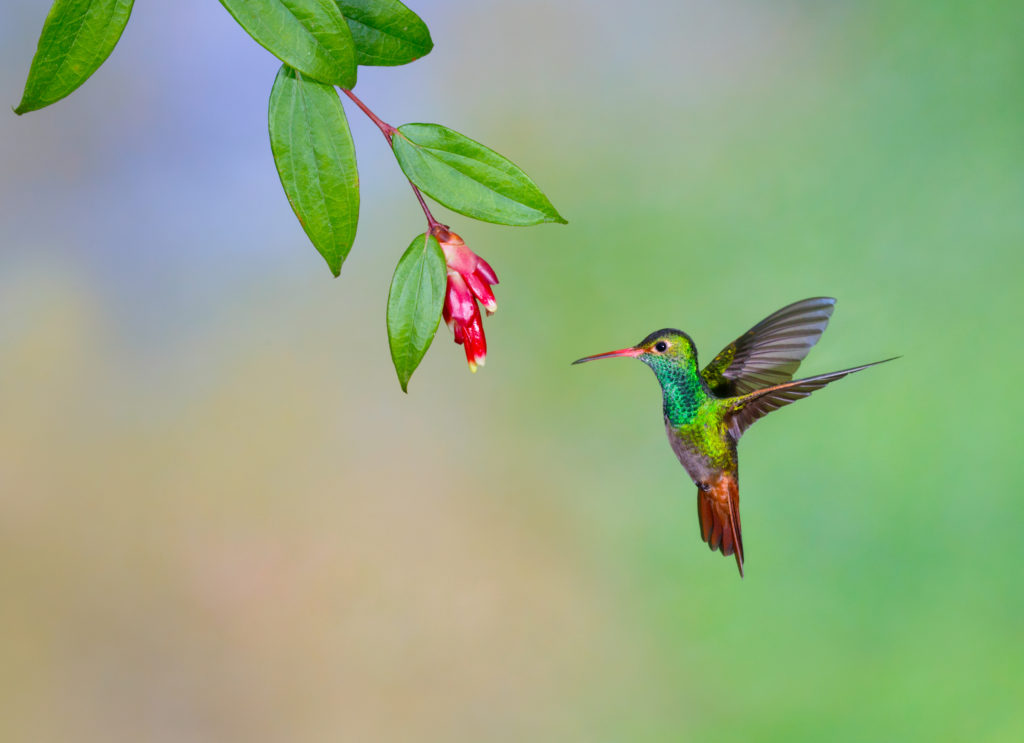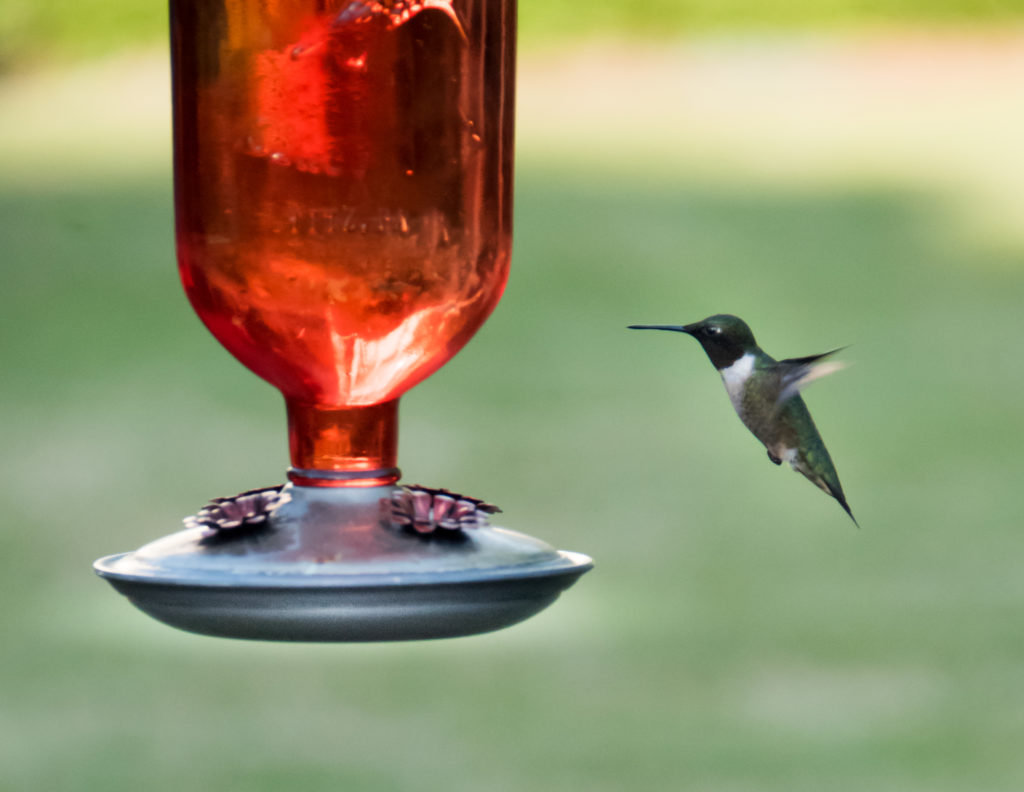
Feeding the Hummingbirds in your Backyard
Posted by Grange Co-op on 2nd Apr 2022
Hummingbirds are some of the smallest birds on the planet but beating their wings up to 90 beats per second burns a giant number of calories! Hummingbirds metabolisms consume nutrients quickly, requiring they visit one-to-two-thousand flowers every day. They need to eat every 10-15 minutes to keep this pace.
You can help these hardworking birds with a natural, sweet treat: nectar. This GrangeKnows article covers which type of nectar-mixtures are safe for hummingbirds, as well as tips to naturally attract and contribute to the health and safety of hummingbirds.
Hummingbird-Safe Nectar Ingredients
You can make your own nectar using ingredients found in many households.
- 1 cup of white cane sugar
- 3 or 4 cups of spring water
Unused mixture can be stored in the refrigerator for up to a week.
Cane sugar is safe for hummingbirds (as is beet sugar) but beware of using turbinado, raw, brown sugar, organic sugar* and never use honey or artificial sweeteners.
Want to avoid the mess of making your own recipe? Grange Co-op offers a variety of hummingbird safe nectars. Many formulas are 100% sucrose, while others provide extra nutrients to hydrate the birds. Click the link above to view our entire selection.
* If cane sugar is not PURE WHITE, it may not have been sufficiently purified to remove trace amounts of molasses. As we know, molasses is rich in iron; this is helpful to humans but is a toxin to hummingbirds in all but the tiniest, tightly monitored amounts.
Types of Feeders
Not all hummingbird feeders are the same. Grange Co-op offers a variety of styles and functions of hummingbird feeders online.
One issue many experience when feeding nectar to hummingbirds is attracting bees. If too many bees are being attracted, change the mixture to five cups of water for every one cup of sugar. If you continue attracting bees, look at changing feeder designs. Purchase a feeder that makes it impossible for the bees to access the mixture – usually this involves a design that has an air gap between feeder port and the liquid below.
Tips for Feeding Hummingbirds
Hummingbirds do not live on sugar water and nectar alone. They feed on tree sap, as well as eat insects and tiny spiders to supply protein. We’ve included some of our top tips for feeding hummingbirds below.
Type & Size

Most importantly, choose a feeder you are able and willing to clean.
Next, look for a feeder that has the ports positioned above the pool of liquid. This will reduce drips because drips of nectar will attract ants and bees.
Don't fill the feeders all the way if they aren't being fully consumed between fillings.
Because hummingbirds are aggressive, more feeders will support more hummers and help reduce territoriality.
Freshness
Change the mixture every 4 to 5 days. If temperatures rise above 90° F, the nectar will not last more than 2-3 days. Even if it shows no immediate signs of fermenting or spoilage it is best to replace, spoiled hummingbird nectar is dangerous to hummers.
Also, if the liquid appears cloudy or you see mold, wash the feeder immediately and thoroughly.
Location
Put your feeders at least four feet above the ground so they are beyond the reach of cats and other predators.
Additionally, never place a feeder too close to a nest, because doing so may cause predation.
If possible, the feeder should be in a shady spot.
Maintenance
Once fed, many hummingbirds will rely on the supply and availability of this food, continuing to visit regularly. At Grange Co-op, we highly recommend the importance of maintaining the cleanliness of bird feeders in your yard. Caution should always be practiced as outside bird feeders and baths can spread pathogens, such as HPAI and H5NI, or otherwise known as 'bird flu'. Transmission in avian species is spread in the feces and respiratory secretions of infected birds. While hummingbird feeders pose a lower risk than general feeders, avian scientists encourage emptying and cleaning weekly. It is also important to note, feeders must be cleaned between refillings - never "top off" without cleaning. Use a mild detergent and water; rinse thoroughly.

Similarly, about once a month, soak the feeder in a solution of bleach and water (1 Tbsp. of bleach per quart of water); rinse very thoroughly!
Additionally, some feeders can be put in the dishwasher for sterilization.
If your feeder is attracting ants, use a moat or AntGuard® available at Grange Co-op repel them.
Additional Information
When summer is wrapping up, avoid taking down the feeder until you haven’t seen one hummer for at least three weeks. Some are late to migration and still rely on our feeder as a food source.
In conclusion, hummingbirds are one of the most fascinating and enjoyable wild birds to watch and care for. For more fun facts on hummers, visit our Wild Bird Articles. If you have any other questions pertaining to hummer-care or wild birds in general, do not hesitate to visit one of our stores and speak with a Grange Expert for more information.
Source: https://www.hummingbirdsociety.org/feeding-hummingbirds/
